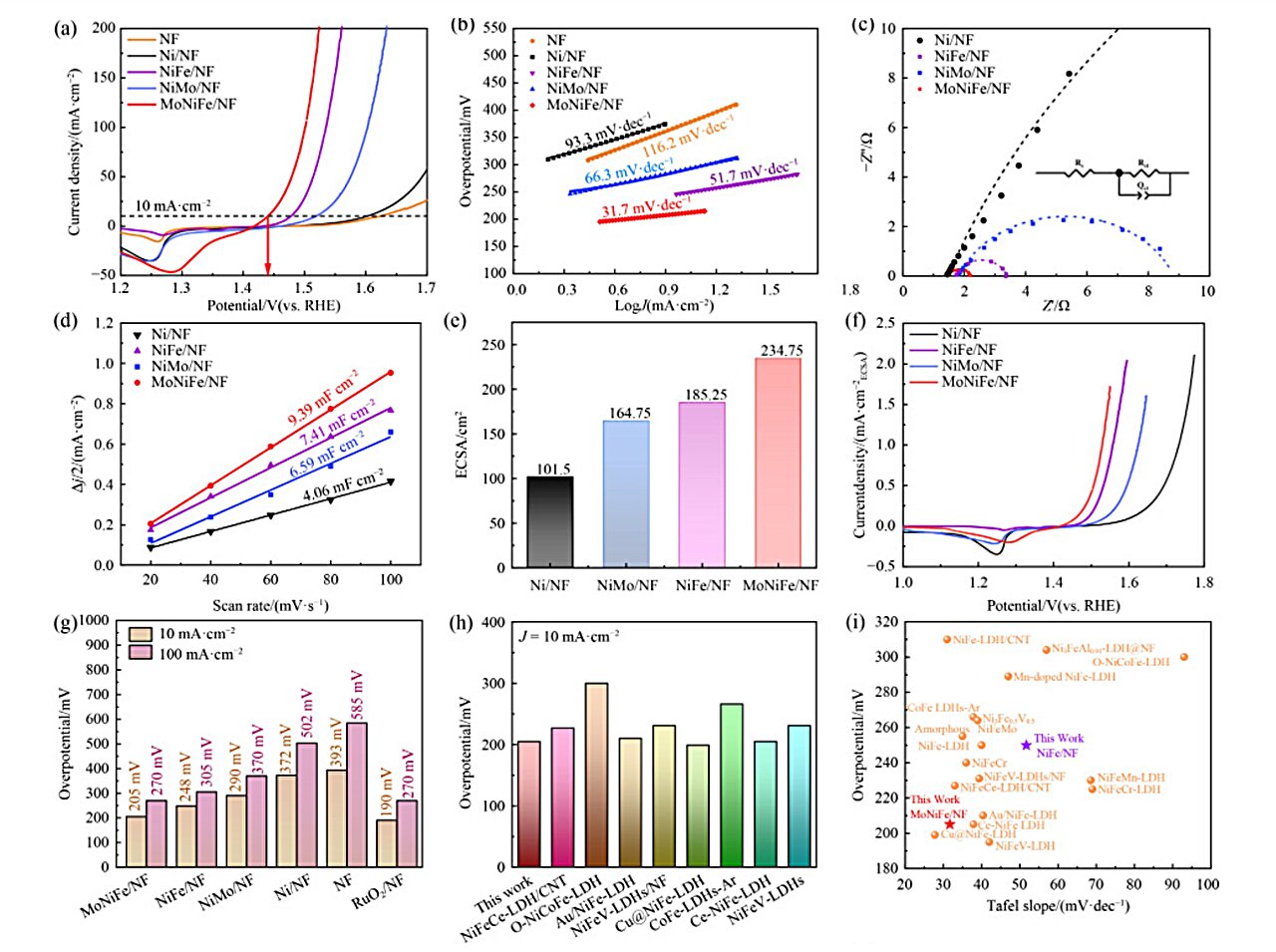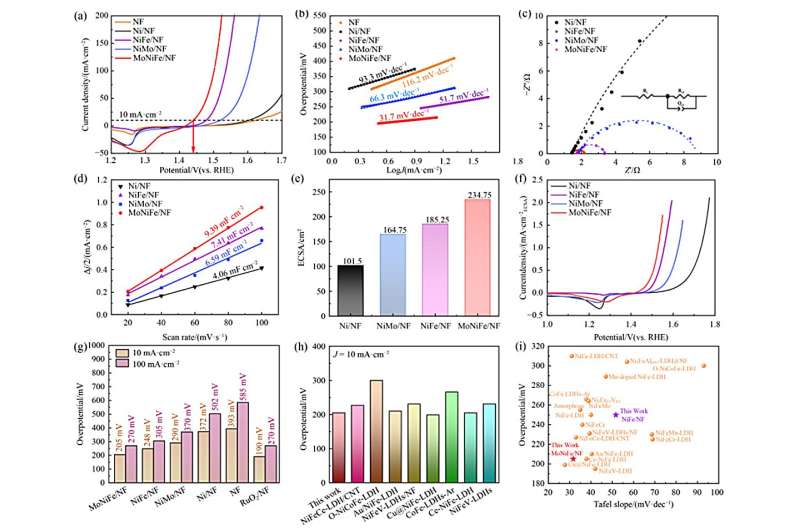

The oxygen evolution reaction (OER) is a vital yet challenging process in water splitting, requiring a four-electron transfer that often suffers from slow reaction kinetics. Noble metal-based oxides, such as RuO2 and IrO2, have been the go-to catalysts for this process, but their scarcity and high cost have motivated the search for alternative, non-precious metal catalysts.
NiFe (oxy)hydroxide (NiFeOOH) has emerged as a promising candidate due to its high activity, low cost, and improved stability. However, optimizing its performance to meet industrial standards remains a key scientific challenge.
Led by Xiangjiu Guan, a team at Xi’an Jiaotong University has introduced high valence molybdenum (Mo) into NiFeOOH to modify its electronic structure and enhance electrical conductivity. The paper is published in the journal Frontiers in Energy.
This innovative approach aimed to reduce the overpotential required for the OER and improve the catalyst’s stability under operational conditions. The researchers employed both empirical experiments and theoretical simulations to understand the interactions between Mo, Ni, and Fe in the doped catalyst.
The Mo-doped NiFeOOH catalyst demonstrated a significantly reduced overpotential of 205 mV at 10 mA/cm² and a Tafel slope of 31.7 mV/dec, indicating superior catalytic activity. Moreover, it maintained stable operation for up to 170 h, showcasing its impressive durability.
The study revealed that Mo-doping enhances the valence states of Ni and Fe, leading to a shift in the d-band center of the bimetallic active sites, which is crucial for the transformation into the active γ-NiFeOOH phase. Theoretical investigations using density functional theory (DFT) computations further supported these findings, elucidating the most effective OER pathways and the role of Mo in enhancing catalytic activity.
This research offers a promising strategy for developing high-performance, non-precious metal electrocatalysts for the OER. The Mo-doped NiFeOOH catalyst’s combination of low overpotential, rapid reaction kinetics, and long-term stability makes it a strong contender for commercial applications in water electrolysis and other renewable energy technologies.
The findings also contribute to the fundamental understanding of bimetallic synergies in catalyst design, providing a foundation for future innovations in the field of electrocatalysis.
More information:
Jingkuo Qu et al, Impact of bimetallic synergies on Mo-doping NiFeOOH: Insights into enhanced OER activity and reconstructed electronic structure, Frontiers in Energy (2024). DOI: 10.1007/s11708-024-0960-6
Provided by
Frontiers Journals
Citation:
Impact of bimetallic synergies on Mo-doping NiFeOOH (2024, September 23)
retrieved 23 September 2024
from https://phys.org/news/2024-09-impact-bimetallic-synergies-mo-doping.html
This document is subject to copyright. Apart from any fair dealing for the purpose of private study or research, no
part may be reproduced without the written permission. The content is provided for information purposes only.